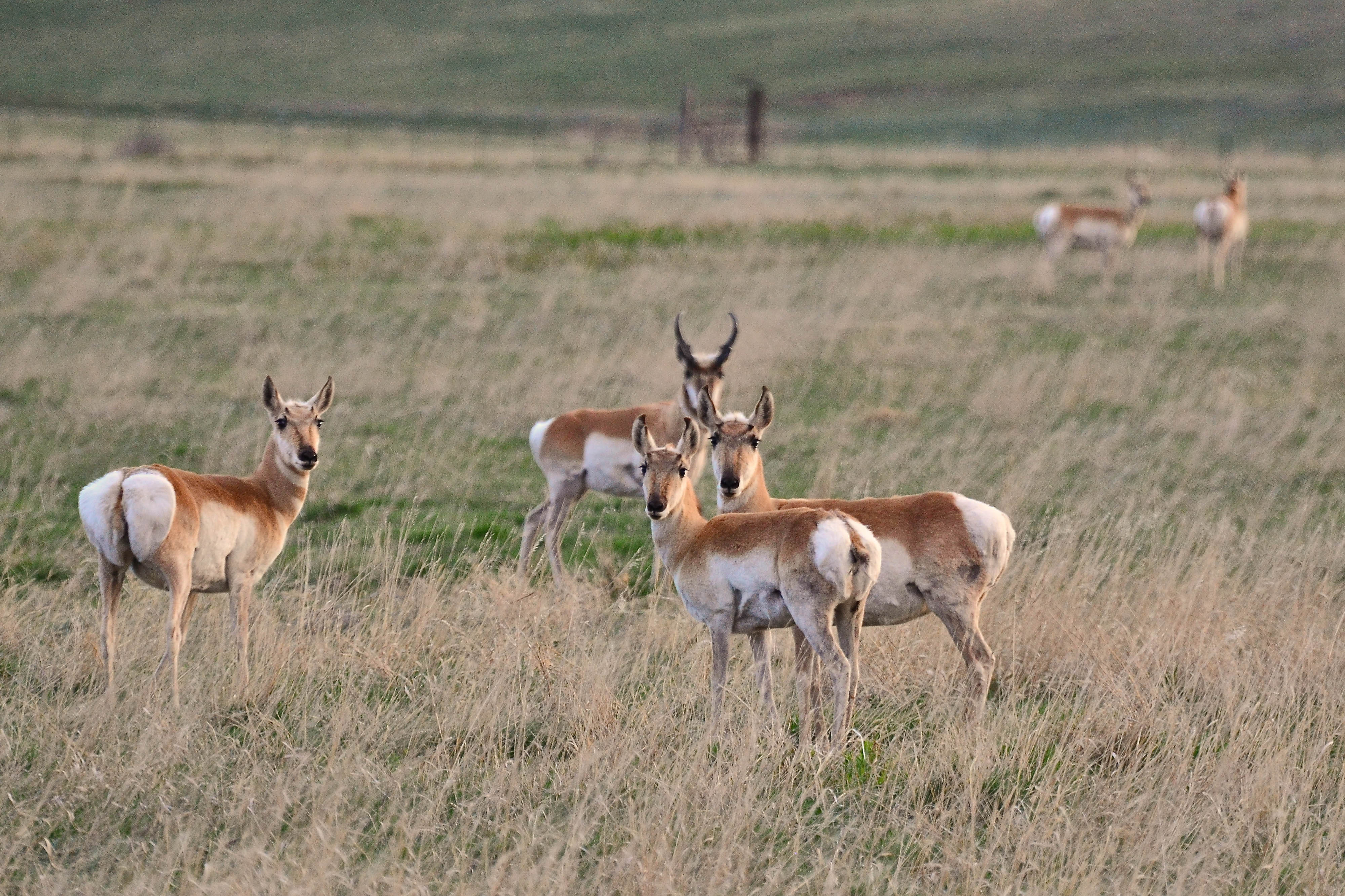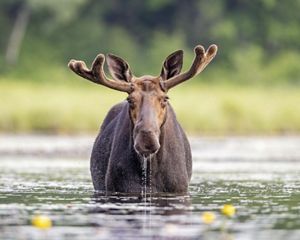Top 5 Wildlife Migrations to See in Idaho
By land, air and stream, Idaho's critters are on the move.
Animals of the world are in motion—flying, swimming, running and crawling to their seasonal homes and breeding grounds. Idaho's varied geography of forests, deserts, sagebrush steppe, rivers and even open farmlands attracts a wide array of wildlife. Often the first critters that come to mind are the large, four-legged ones we might see from the road or on the trails, but there are many more animals on the move. Explore some of our favorites below!

A 900-Mile Journey
Chinook Salmon
The Pahsimeroi and Lemhi rivers are waters that salmon, quite literally, will die for. Each year, these rivers and their tributaries mark the end of a 900-mile journey from the Pacific Ocean for the salmon. When they get to the small streams of central Idaho, they spawn and then die. After hatching and growing, young salmon—called smolts—will begin their own migration to the sea. Many salmon, unfortunately, are stopped short of their final spawning area by insufficient water or irrigation diversions. The Nature Conservancy in Idaho works with landowners and partners to remove those barriers.
While salmon can be difficult to see in large rivers, you can carefully watch them as they move up small streams, such as at the Idaho Department of Fish and Game’s Wildlife Management Area along the Pahsimeroi in May, Idaho. A spectacular place to see the salmon is at Dagger Falls, on the Middle Fork of the Salmon River. Around July 4th, the salmon can be seen leaping up the falls—a dramatic sight.

From Sea to Sagebrush
Long-Billed Curlew
In the spring, as you overlook grasslands and sagebrush prairie, you may encounter this charismatic shorebird. Easily recognized by their long legs and a down-curved bill, the long-billed curlew is the largest member of the sandpiper family and unique in its habitat usage—it is primarily ground-dwelling. They spend winters near southern coasts on wetlands, mudflats, flooded fields, and beaches, often in the southern United States and Mexico. But as the flowers bloom and the weather warms, the curlew make their return to the grasslands of the West, nesting in pastures and wet low spots to provide better feeding area for their young.
You might find these fascinating migratory birds at the Flat Ranch Preserve, located fifteen miles west of West Yellowstone. In an on-going study, several curlews from the Ranch have been fitted with satellite transmitters. Over the course of three years, radar followed one such curlew as she made the challenging 900-mile trip between Mexico and the Ranch each year. Her transmitter has since been removed but the data she provided is invaluable in helping scientists understand the best practices for conserving the long-billed curlew population in Idaho.

Millenia in the Making
Pronghorn
Pronghorn are the only large mammals remaining from the Pleistocene—the time period when woolly mammoths, cheetahs and giant sloths roamed North America. Their migration routes are millennia old. One such migration was tracked in a study by the Wildlife Conservation Society and Lava Lake Land and Livestock.
Each fall, pronghorn migrate from the low-elevation, sagebrush lava beds of Craters of the Moon National Monument, through private ranches in the Southern Pioneer Mountains, over expansive public lands to the north and into Montana. It’s a migration of 160 miles—one of the longest mammal migrations in North America. In the spring, the pronghorn return to Craters of the Moon, and are very visible in the wide-open sagebrush country.
A Migration to Hear
Sandhill Crane
Throughout September and early October, thousands of sandhill cranes can be spotted across wetlands, open prairie and river basins of Idaho during a layover on their migration south. The cranes will go as far north as the Arctic coast of Canada and return to winter range in California and northern Mexico. Viewing them as they pass through in spring offers a chance to see a spectacular courtship dance.
Depending on the season, sandhill cranes can often be at Rinker Rock Creek Ranch, or even seen from the deck of the Flat Ranch Preserve. Standing at an impressive four feet tall, the cranes are easy to spot (and hear), dancing across the critical grassland habitat of the Ranch.

A Multigenerational Journey
Monarch Butterfly
With captivating bright-orange wings and contrasting black patterns it is not hard to imagine why the monarch butterfly was selected as Idaho’s official state insect. Monarchs get nourishment from milkweed plants available during Idaho’s summer months, but they are unable to survive cold winter climates. Their journey marks one of the most unique migrations in North America.
Monarchs are the only butterfly known to make a two-way migration—in some cases traveling thousands of miles to winter habitat in Southern California or central Mexico. To make this astonishing trip, monarchs depend on a relay system of overlapping generations migrating in a single year. During their return to warmer climates each successive generation travels farther north, taking 3-4 generations to reach the northern United States.
Habitat loss, climate change and declining milkweed populations are threatening monarch populations across North America. You can provide monarchs with critical habitat by growing native milkweed in your garden. Ever small action helps.
Honorable Mentions
Nighttime Travelers
Bats
Although all 14 species of Idaho’s bats migrate south for the winter, the distance of such migrations vary between species. While the majority of Idaho bats will travel short distances of up to 60 miles in search of winter hibernation grounds, silver-haired bats and hoary bats fly up to 600 miles to seek warmer weather!
Traveling to California, Arizona or even northern Mexico, these bats migrate one of two reasons: a seasonal lack of food or unsuitable living winter living conditions. When the temperatures rise enough for insects to return in the spring, the bats make the trip back to Idaho. Migratory bats can be spotted in the night skies in many parts of the state including TNC's Ball Creek Preserve.
Eagles, Falcons and More
Raptors
Each spring, raptors return from Mexico and Central and South America to nest in the rocky canyons of the Snake River. They find the sagebrush plains that surround these canyons to be the perfect place to spend the summer, due to one of the highest densities of ground squirrels in the world. Golden eagles, prairie falcons, ferruginous hawks, burrowing owls and other species build nests in remote canyons, but they can often be seen out hunting in the mornings and afternoons.
Spectacular interactions—golden eagles stealing meals from prairie falcons, red-tailed hawks fighting over territory—can often be observed. A great place to catch the action is the Morley Nelson Snake River Birds of Prey National Conservation Area, located near Kuna. As you watch raptors, keep an eye out for badgers, too, as this area has one of the world’s largest populations of this interesting mammal.
Stay connected for the latest news from nature.







